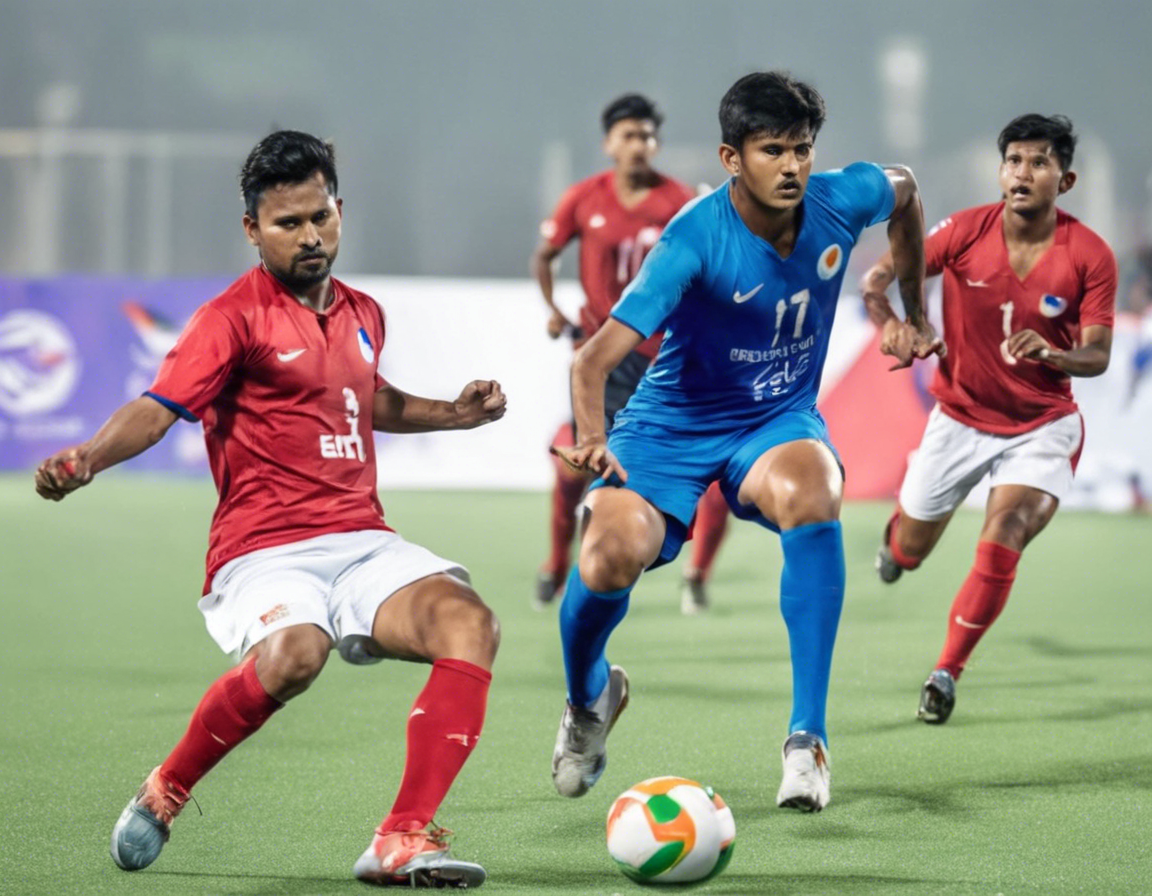The Asian Games is a prestigious sporting event that brings together athletes from across the continent to compete in a wide range of sports. Two countries that have a long history of participation in the Asian Games are India and Nepal. Both countries have a rich sporting tradition and have produced many talented athletes who have excelled on the international stage. In this article, we will compare and contrast the sporting cultures of India and Nepal, and explore how they have fared in past editions of the Asian Games.
India: A Sporting Powerhouse
India is a sporting powerhouse in the Asian region, with a population of over 1.3 billion people and a deep-rooted passion for sports. The country has a long and storied history of athletic excellence, particularly in sports like cricket, hockey, and badminton. India has consistently performed well at the Asian Games, having won a total of 541 medals in various editions of the games. The Indian contingent has excelled in sports like athletics, shooting, wrestling, and boxing, among others.
Key Highlights:
- Success in Individual Sports: India has produced several world-class athletes who have excelled in individual sports like shooting (Abhinav Bindra), badminton (P.V. Sindhu), and boxing (Mary Kom).
- Dominance in Team Sports: Indian teams have historically performed well in sports like hockey, winning multiple gold medals at the Asian Games.
- Growing Interest in non-traditional Sports: India has seen a surge in interest in non-traditional sports like kabaddi and wrestling, with the emergence of professional leagues boosting their popularity.
Nepal: A Nation of Resilient Athletes
Nepal, a small but resilient nation nestled in the Himalayas, has a growing presence in the world of sports. Despite its size, Nepal has a proud sporting tradition and has produced talented athletes who have made their mark on the international stage. While Nepal may not have the same resources and infrastructure as larger countries like India, its athletes have shown great determination and spirit in competitions like the Asian Games.
Key Highlights:
- Challenges and Triumphs: Nepalese athletes face various challenges, including limited resources and training facilities, but have overcome these obstacles to achieve success in sports like athletics and taekwondo.
- Historic Achievements: Nepal’s athletes have made history at the Asian Games, with Ganga Bahadur Thapa becoming the first Nepali medalist in the 1970s, and Deepak Bista winning multiple medals in taekwondo.
- Emerging Sports: Nepal is diversifying its sporting portfolio and exploring new avenues like mountaineering and cricket, which have the potential to garner international recognition.
India vs. Nepal: A Friendly Rivalry
When it comes to the Asian Games, India and Nepal share a friendly rivalry based on mutual respect and admiration for each other’s sporting achievements. While India has a larger contingent and greater resources, Nepal’s athletes often punch above their weight and showcase incredible talent and determination. The two countries have competed in various sports at the Asian Games, with both nations inspiring each other to strive for excellence and sporting glory.
Key Points of Comparison:
- Population and Resources: India’s large population and resources give it a competitive edge in terms of funding, infrastructure, and training facilities compared to Nepal.
- Medal Tally: India boasts a higher overall medal tally at the Asian Games compared to Nepal, reflecting its stronger sporting culture and legacy.
- Spirit and Determination: Nepalese athletes are known for their resilience and determination, often overcoming challenges to compete at the highest level against larger nations like India.
FAQs: India Vs Nepal at the Asian Games
1. Which sports are India and Nepal most competitive in at the Asian Games?
- India excels in sports like shooting, wrestling, boxing, and hockey, while Nepal has shown strength in sports like athletics and taekwondo.
2. How do India and Nepal compare in terms of resources and infrastructure for sports development?
- India has a more developed infrastructure, funding, and training facilities compared to Nepal, which faces challenges in this regard.
3. Have India and Nepal ever faced each other in a sporting event at the Asian Games?
- India and Nepal have competed against each other in various sports at the Asian Games, fostering a friendly rivalry between the two nations.
4. Which athletes from India and Nepal have made a significant impact at the Asian Games?
- Athletes like P.V. Sindhu and Mary Kom from India, and Deepak Bista from Nepal, have made significant contributions to their respective countries’ medal tallies.
5. How have cultural factors influenced the sporting success of India and Nepal at the Asian Games?
- India’s diverse cultural landscape has contributed to its success in a wide range of sports, while Nepal’s resilient spirit is a driving force behind its athletes’ achievements.
Conclusion
In conclusion, the Asian Games serve as a platform for countries like India and Nepal to showcase their sporting prowess and compete against the best athletes in the continent. While India has a well-established sporting culture and robust infrastructure, Nepal’s athletes demonstrate remarkable resilience and determination in the face of challenges. The friendly rivalry between the two countries adds an element of excitement to the Asian Games, as both nations aim to achieve greater success and inspire future generations of athletes. As India and Nepal continue to make their mark on the Asian sporting stage, their athletes serve as ambassadors of excellence and sportsmanship, embodying the true spirit of competition and camaraderie.
